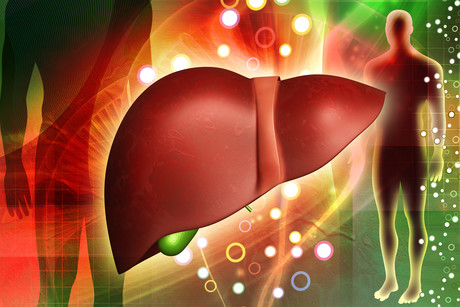Map of human liver cells reveals molecular make-up of individual cells

A map of the cells in the human liver reveals the differences between individual cells at the molecular level which can have a profound impact on their behaviour in tissue, tumours and disease.
The research team, led by Drs Sonya MacParland and Ian McGilvray, scientists at University Health Network's (UHN) Transplant Program, Toronto General Hospital Research Institute and Dr Gary Bader, Professor at the Donnelly Centre for Cellular and Biomolecular Research at the University of Toronto (U of T), mapped out the cellular landscape of 8444 individual cells obtained from the tissues of healthy deceased donor human livers.
By examining the gene expression profiles of each of these cells — about 1500 active genes per cell — the research team found 20 distinct cell populations made up of hepatocytes, endothelial cells, cholangiocytes and various immune cells such as B cells, T cells and Natural Killer (NK) cells.
Findings have been published in journal Nature Communications.
The authors will also make their research available to the Human Cell Atlas Project, an international, open-access, collaborative effort to map all human cells (www.humancellatlas.org) to help scientists understand how genetic variation impacts disease risk and influences health. Because it is an open, free resource for any researchers in the world, it will accelerate discoveries which will in turn inform new treatments and drug development.
Dr Ian McGilvray, Research Director, UHN Transplant Program and Associate Professor in the Department of Surgery at U of T, has performed hundreds of liver transplants and cancer surgeries. He wants to change how we treat liver disease. But in order to do that, he said that we need to first understand how the liver functions at the most fundamental level of the single cell.
The variation between cells is huge, he said, but in 2018, it is surprising how little we know about the liver’s cellular landscape.
The impact of this is that in many cases of liver failure, our only option is transplantation, he says, noting that alternative treatments, reduction of transplant rejection rates and regenerative medicine solutions can only be found if we understand how liver cells develop and work together within tissues and biological systems.
The urgency to find alternative approaches is spurred on by the increasing burden of liver disease, he said. Up to 23% of obese individuals are at risk of developing fatty liver with inflammation, for example, and more than 70 million people are chronically infected with hepatitis C.
In creating the liver map, the team had to overcome several challenges.
First, the project could only have been possible with a multidisciplinary team consisting of transplant surgeons, immunologists, hepatologists, computer scientists and genomics researchers from different institutions to develop the first-ever map of a solid organ.
Another major problem in studying the human liver is difficulty in accessing fresh tissue. Samples in the study were collected from deceased donor livers deemed acceptable for liver transplantation, with consent and ethics approvals. This makes it unique in the world, in contrast to the standard method of studying the liver from biopsy samples.
A third challenge is isolating single cells from liver tissue. Liver cells such as hepatocytes and others are delicate and often do not survive standard tissue extraction, which may involve chopping, separating and filtering of tissue into smaller parts. During this process, cells often die.
But with the experience gained in transplantation and painstaking trial and error work of many years, the researchers were able to develop the best protocols using enzyme mixtures to gently dislodge cells embedded in the spider web-like net of connective tissue of the liver, without actually harming the fragile cells themselves.
Only then could the team begin studying the molecular make-up of each cell individually. This step is absolutely essential in gaining a deeper understanding of how a small but critical change in a cell can precipitate a disease state within a complex mix of many other cells.
The latest technological advances helped the team to overcome the limitations of previous techniques such as genomics. Although it can analyse many cell types simultaneously ‘in bulk’, it cannot tease out the critical differences between cells or do so in combination with multiple other data.
Reaching out to their colleagues in the Princess Margaret Genomics Centre with their 10X Genomics Chromium system which excels at the analysis of complex tissues and heterogeneous collections of cells, and to Dr Gary Bader at U of T’s Donnelly Centre, who developed the state-of-the-art data analysis pipeline and custom pathway analysis software for the researchers, the team was then able to map out the genetic and molecular function of each cell and how each one contributes to overall liver function.
This new understanding can help scientists to harness these two contrasting macrophages to, for example, achieve “tolerance” of a new donor organ, said Dr McGilvray. For transplant recipients, he explained, in the future, clinicians may want to downregulate the pro-inflammatory cells and upregulate the anti-inflammatory cells so that the recipient does not reject the new organ, and even may not need to take as many or any immunosuppressive medications.
The research was funded by University of Toronto’s Medicine by Design initiative which receives funding from the Canada First Research Excellence Fund, funds from UHN’s Transplant Program, and the Toronto General & Western Hospital Foundation.
Pancreatic cancer hijacks metabolism switch to help it spread
Pancreatic cancer hijacks a molecule known for regulating physiological processes, such as food...
Novel antibiotic activates 'suicide' mechanism in superbug
Researchers have discovered a new class of antibiotic that selectively targets Neisseria...
Modifications in the placenta linked to psychiatric disorders
Schizophrenia, bipolar disorder and major depression disorder are the neuropsychiatric disorders...




